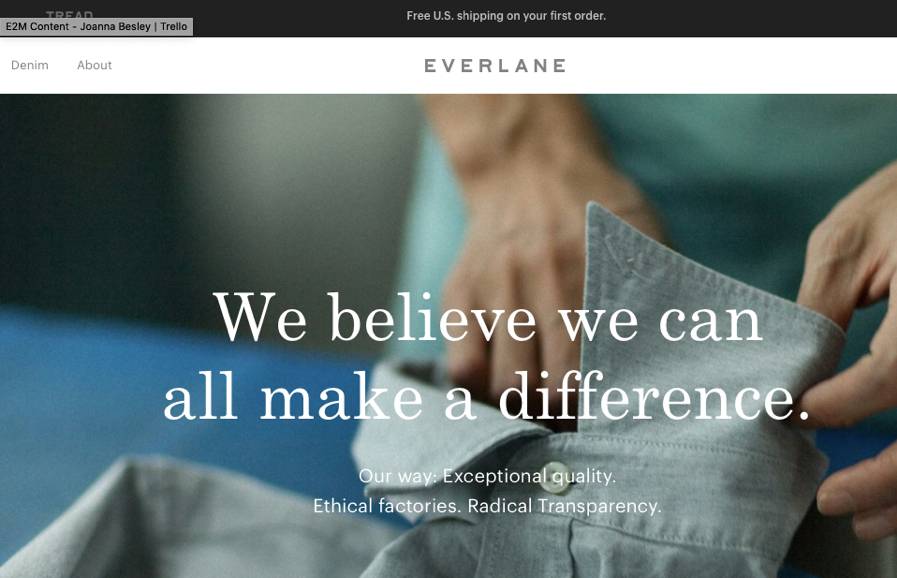As much as I’d love to sit on a pedestal and drone on about how easy it is to start a business in the digital era – the reality is that the first few years were tough as I found my footing. The experience has been many things, but easy is definitely not one of them!
If I could go back and do it all again (with everything I know now), there are tons of things I would do differently. So, in other words, I’m speaking from hindsight!
According to research from the Bureau of Labor Statistics for the US Government, 20% of startups will fail within the first year, and nearly half will go out of business after five years. When it comes to e-commerce, the numbers are even worse – as it is estimated that nearly 90% of all online businesses end in failure.
True, the digital age has made it easier to connect with customers across the world. But does that alone guarantee – or even boost the probability of – success? Nope!
The reasons behind the success or failure of a business is different for everyone – and are often reliant on numerous circumstances like funding, market demand, and internal support.
So how should someone go about starting a small business that succeeds for longer than just a few years?
While many factors are out of your control, the good news is there are some things you can do during the launching process to put yourself in a position to succeed.
Let’s discuss some of the most important “ingredients” to the “recipe for success” in this new decade – and beyond.
A Growth Mindset
What is a growth mindset?
This is one of those flashy buzzwords that gets thrown around the business world all the time. But what does it really mean?
According to Harvard Business Review, a growth mindset involves “individuals who believe their talents can be developed through hard work, good strategies, and input from others.”
All too often, business owners think they’ve found the secret to life. Have you ever worked for a boss who genuinely believed they were always the smartest person in the room and everyone else is an idiot? This is the polar opposite of a growth mindset.
The best thing you can do to get in a good entrepreneur mindset is to accept that growth is impossible when you lose the student mentality.
You launched your business because you know a great deal about the niche (hopefully). However, this doesn’t mean you have ALL the answers.
Adopting the growth mindset means you are committed to the mentality that your business is a constant working progress.
As you develop your company and hit milestones, this mindset involves asking yourself these types of questions:
- How can this strategy reach even more customers?
- How can we build on our successes and failures?
- What do the other stakeholders think?
- How can we use their input to refine the business?
The growth mindset is all about being open to change and accepting the reality that you’re not always the smartest person in the room.
A Focus on Relationships
Customers in the digital age essentially have an unlimited number of options across the globe. Success in business has become about so much more than just a killer offering – it’s about the experience and relationship you are able to provide.
The same goes for employees – a crappy relationship with the company will almost certainly turn awesome workers away.
Your relationship with your customers (and employees) is everything – and it is what will sustain long-term growth.
Customer retention rates have a direct correlation to profitability – and just a 5% growth in customer loyalty can increase revenue by 25%.
Therefore, much of your focus needs to be on aspects of the customer experience, especially during the initial launching process. Decide how you will be enticing customers to keep coming back through things like exceptional customer service, loyalty perks, or by building a community around your brand.
This is especially great for companies that aren’t necessarily selling something new. For example, Bombas started by selling socks – certainly not a revolutionary product idea. But their no question’s asked return policy and active social community quickly helped them to connect with customers on a deeper level and gain momentum.

Now, on the employee side of things – you simply cannot grow without help. This is definitely something I learned in the past year. As Ayokay was growing, I was getting to the point where I didn’t have the bandwidth to take on new projects – which is when I realized I needed to hire Crystal to advance the business.
The biggest piece of advice I can give on having employees is that respect is earned!
And the only way to earn respect is through a healthy relationship – this goes beyond the workplace! In most cases, you won’t get stellar effort from employees if you think you’re entitled to their respect just because you sign their paycheck.
As an employer, you need to make it abundantly clear that you care about your employee’s professional growth. Focus on creating a relationship where everyone can thrive. Always remember, people don’t leave jobs, they leave crappy managers and cultures.
A Deep Understanding of Consumer Behavior
Another important “secret” to success is understanding that customers behave differently than they did twenty, ten, or even just five years ago!
Technology plays a major role in the way that people discover, research, and purchase products/services. Companies need to understand how to stay in tune with modern customers if they want to stay relevant.
The strategies that worked like magic yesterday may be completely obsolete today!
For instance, trends in keyword demand change every single month. The keywords your website was ranking for once could be completely irrelevant as time goes on. Adjusting your site’s SEO practices is one of the most important ways to keep up with target customers.
Staying up-to-date with the latest trends and preferences is the best way to keep your success rolling. Make it a point to take some time out of your day to read industry blogs, listen to relevant podcasts, and observe behavioral patterns and shifts within your own customer segments.
Regardless of how overbooked you might feel, staying in-tune with how the digital world is evolving is a HUGE part of not just being successful, but staying successful.
A Clear Vision
This one probably sounds like a no-brainer, but it’s something that countless businesses get wrong – whether they like to admit it or not. To succeed when launching a business, you have to know who you are, where you are going, and how you will get there.
A good company vision doesn’t just come out of the blue – it takes a lot of planning and delicate consideration. You need to know your industry backwards and forwards with a clear branding plan that makes it crystal clear what value your company provides – and who should buy your offering.
While a business can change and adjust as time goes on, it is incredibly important that the core of your vision and branding remain constant. Studies have found that businesses with inconsistent branding are less profitable, trusted less by consumers, and even have lower employee morale.
No matter what, you need to have a solid understanding of your brand at its very core by laying out your company’s values and vision before you launch.
A great example of this is the clothing brand Everlane. Their founders wanted to create a business around sustainability, ethical production, and transparency – which are values they’ve clearly stuck to since day one.

These components have guided every decision the company has made along the way.
If you aren’t crystal clear on what your vision is, no one else will be.
The Wrap
Starting a business from scratch is one of the riskiest and scariest things you can do – but the rewards can be great – if you are able to succeed.
The good news is you don’t need to leave things up to chance. These four important elements – mindset, relationships, understanding, and vision – can ensure that your business has a solid foundation to grow and evolve from.
Jack Shepler is a Marketing and Search Engine Optimization expert. He founded Ayokay, award-winning marketing, and web design firm in Indianapolis, Indiana that has built brands, increased sales for businesses, and helped nonprofit organizations fulfill their missions since 2011. He uses his decades of experience to educate through the Ayokay blog and through public speaking. You can follow him on LinkedIn.







